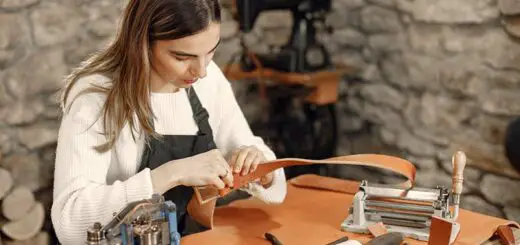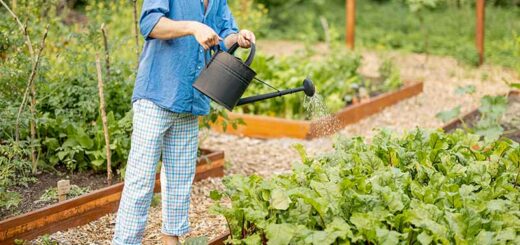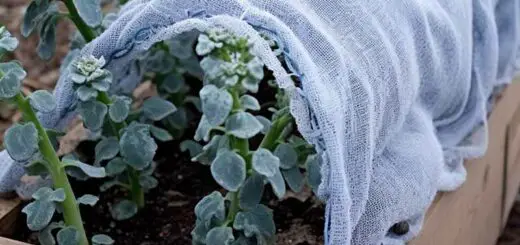Revamp Your Garden with Weeding Tools
Weeding tools or weed pullers are an essential part of gardening and are used to remove unwanted weeds from garden beds, lawns, and other areas. These tools come in various sizes and shapes, from handheld tools such as trowels and hoes to long-handled tools such as cultivators and weeders.
Weed pullers can help maintain the health and beauty of a garden by removing weeds that compete for nutrients, water, and sunlight with desirable plants. Choosing the right weeding tool for the job can make gardening easier, more efficient, and more enjoyable while ensuring a healthy and thriving garden.
These gardening tools can transform a garden in several ways, including:
- Improving the garden’s appearance: Weeds can quickly take over a yard and make it look unkempt and messy. By using these tools to remove unwanted plants, you can instantly improve the appearance of your garden.
- Reducing competition for resources: By eliminating unwanted vegetation, you help your desired plants flourish by providing them more space and access to essential resources such as water, sunlight, and nutrients. Without this competition from undesirable plants, they will have the opportunity to reach their full potential regarding growth rate and yield.
- Preventing the spread of diseases: Proactively removing weeds is a smart way to reduce the risk of pesky pests and harmful diseases spreading throughout your yard.
- Encouraging healthy growth: Clearing out those garden intruders can do much more than improve the aesthetic of your lawn; it can also cultivate healthy growth and enhance its overall health. They produce various chemicals that have been known to inhibit other plants’ development, so removing them creates an environment where all plants may flourish.
- Making gardening easier: These garden equipment can make gardening less physically demanding and more efficient. They allow you to remove nuisance plants without bending down or using your hands, making the process faster and more comfortable.
Negative effects of weeds on a garden
These invasive plants can have various negative effects on a garden. Here are some of the most common ones:
- Competition for resources: These unwelcome newcomers battle with garden plants for vital nutrients, water, and sunlight. Growing rapidly, they can soon overrun the area that supports thriving vegetation.
- Stunted growth: When crops are deprived of resources, their growth can be stunted. If not addressed promptly, this can result in a stunted expansion of plants and significantly reduced yields – or even worse, destruction.
- Disease and pest harboring: They can be detrimental, acting as carriers and transmitters of pests and diseases that lead to plant deterioration and potential crop failure.
- Unsightly appearance: They can detract from the beauty of a garden, making it appear untidy and unappealing. You can maintain your ideal aesthetic and showcase its magnificence by eliminating these pesky plants.
- Reduced biodiversity: They are infamous for their capacity to overwhelm native plant species, diminishing the variety of vegetation in a plantation and thus having far-reaching consequences for local ecosystems.
- Increased maintenance: They demand constant care, whether you eradicate them with manual labor or herbicides. This type of upkeep requires time and money that many people may not have in abundance.
Types of weeding tools
Handheld weeding tools
They are equipment designed to be held and operated with one hand. They are used for eliminating noxious ornamentals from planting beds and other areas. Here are some examples of handheld weeding equipment:
- Hand trowel: It is a small handheld piece of equipment with a pointed blade to dig up noxious plants and their roots.
- Handheld hoe: The small yet sharp-edged hoe is the perfect gadget for digging up unwanted plants from your soil.
- Weed puller: It is equipped with a long handle and two prongs at the end; this tool is your ultimate ally in unwanted shrubs removal. You can easily use it to grasp those invasive plants from their roots and eliminate them.
- Garden knife: This device is a finely honed knife with a saw-toothed edge and is an indispensable garden implement used for cutting through stubborn weeds, even down to their roots.
- Weeding fork: It is a piece of forked garden equipment with a long handle employed to dig out deep-rooted, undesirable plants.
- Hori Hori knife: Perfect for any gardening job, it is outfitted with a curved, razor-sharp blade which is an ideal choice for digging, cutting, and weeding.
Long-handled weeding tools
They have a long handle or shaft, allowing the user to reach undesired vegetation and other plants without bending down or kneeling on the ground. They are ideal for gardeners with mobility issues or who prefer to stand while gardening.
Here are some of the best choices available:
- Weed puller: As mentioned earlier, it is equipment with a long handle and a forked end used to grab and pull noxious greenery from the ground.
- Long-handled hoe: It is a perfect gadget for uprooting stubborn vegetation with its long handle, providing you the power to take charge of your yard.
- Cultivator: A multi-faceted device designed to break up and eradicate undesired plants from the ground while aerating soil.
- Long-handled trowel: The ideal equipment for eliminating noxious and uprooting pesky plants in your garden.
- Long-handled weeder: Featuring a long handle and sharp tip, it is perfect for easily uprooting wild plants.
Electric weeding tools
They use electricity to power their operation. They are designed to make weeding easier and more efficient and are ideal for gardeners who prefer a more high-tech approach to gardening.
Check out these innovative electric weed eradicators below:
- Electric weed trimmer: Handheld garden equipment that uses a rotating cutting head to trim undesirable plants and grass.
- Electric weed whacker: Just like a weed trimmer, this device is outfitted with an oscillating cutting head; however, its extended shaft allows you to get into those tight spots that were once unreachable. Now, it’s easy for you to target stubborn greenery in any corner of your yard!
- Electric weed sprayer: This plant care gadget uses electricity to power a pump that sprays herbicide onto weeds, killing them.
- Electric cultivator: This eco-friendly gear utilizes electricity to activate its motor, driving the blades of the cultivator and effortlessly breaking up soil.
- Electric edger: This remarkable garden tool is the perfect solution for edging plantation beds, driveways, and other areas of your yard. It can also efficiently trim unwanted shrubs along fence lines or any other area with precision.
How to Choose the Right Weeding Tools for Your Garden
Assessing the size and type of your garden
It is important to choose the right wedding equipment and ensure your yard remains healthy and well-maintained.
Here are some tips for assessing the size and type of your green space:
- Measure the size: Start by measuring the size. This will give you an idea of the scale of the weeding task and the type of equipment you will need. Easily capture the dimensions of your plot with a measuring tape or wheel to ensure you’re equipped with all of the necessary information.
- Determine the type of garden: Consider the type of plantation you have. Is it a vegetable or flower plantation, or a combination of both? This will affect the type of gadgets you will need. For example, vegetable plantations may require more heavy-duty devices to remove weeds and prepare the soil for planting.
- Identify the types of weeds: Identify the types of unwanted greenery that are growing. Some may require specialized equipment for effective removal.
- Consider the terrain: When envisioning your yard, consider the topography. If it has steep slopes, rocky soil, or hard-to-reach areas? These scenarios will determine what kind of gardening implements you must utilize.
- Estimate your time and effort: Before embarking on your planting journey, it is essential to gauge how much time and energy you can invest in removing unwanted plants. By assessing yourself, you will be more well-equipped to choose the best apparatus for your specific needs.
How to properly use handheld weeding tools
Handheld weeding devices are designed to help you remove undesired plants from your lawn without having to do it manually.
If you want to get the most out of these tools, here are a few guidelines on how to use them correctly:
- Choose the right tool for the job: Each is designed for a specific purpose, so make sure you choose the right one for the job.
- Use the right technique: When using the weed puller, it’s important to use the right technique to avoid damaging your plants. Start by loosening the soil around the weed with the device, and then gently pull the noxious herbs out by the roots. Remove as much of the root system as possible to prevent the weed from growing back.
- Be careful around your plants: Handle this equipment carefully to avoid harming your plants. Maintain a gentle touch and stay clear of the roots for maximum safety.
- Keep your tool clean: Preserve the longevity of your handheld device by thoroughly cleaning it after each use. This will help prevent the spread of disease and pests and ensure you take a damp cloth or brush to remove dirt and debris that may have built up.
- Use the right tool for the job: Remember that different weeds may require a different weeding tool. For example, a taproot weed like a dandelion may require a weeder with a long, pointed end to get the root out, while a shallow-rooted weed like chickweed may be easily removed with a hoe or cultivator.
Techniques for using long-handled weeding tools
These devices are designed to help you remove weeds from your lawn while standing up, which can be more comfortable and less taxing on your back than smaller ones.
Here are some techniques for using long-handled weeders:
- Choose the right tool for the job: Long-handled weeders, like handheld gardening equipment, come in different styles for different purposes. For example, a stirrup hoe is excellent for quickly chopping off weeds just below the soil’s surface, while a hoe with a sharp edge is better for digging out larger weeds.
- Keep the tool sharp: A sharp blade on your gardening gadget will make cutting through weeds and roots easier. You can sharpen it with a file or a sharpening stone if it becomes dull.
- Use a sweeping motion: When using a hoe or cultivator, use a sweeping motion to cut through the weeds just below the soil’s surface. Start at one end of the plantation bed and work across, pulling the device towards you as you go.
- Use a jabbing motion: To effectively extract weeds from the ground, grab your weeder and use a jabbing motion to dig into the soil. Position it next to the weed and carefully lever it out of its hold. Remove as much of its root system as possible for the best results.
- Be careful around your plants: Take caution when utilizing long-handled weeding equipment to avoid harming your desirable plants. When operating the equipment, maintain an angle that enables you to weed near the base of unwanted weeds without accidentally destroying valuable vegetation.
- Take breaks: Weeding can be physically demanding, even with long-handled tools. Take breaks as needed to avoid overexerting yourself.
Safety precautions when using electric weeding tools
Electric weeding equipment can be very useful for removing weeds quickly and efficiently. However, as with any power gardening gadgets, certain safety precautions should be taken to prevent injury.
Here are some general safety guidelines to follow when using the same:
- Wear appropriate protective gear: You should always wear appropriate protective gear when using them. This includes eye protection, hearing protection, sturdy shoes, and gloves.
- Check the tool before use: Inspect the equipment for any damage or defects affecting its performance or safety. Ensure the gadget is in good working order before using it.
- Use the tool only as intended: They are designed for a specific purpose, and you should only use them for that purpose. Do not modify the equipment or use it in ways not recommended by the manufacturer.
- Be aware of your surroundings: Exercise caution when handling your electric weeding tool – remember to stay alert and mindful of any risks that may be present. To guarantee safety, it is essential to confirm that there are no other people or animals in the area you’re working in.
- Use the tool in a dry environment: They should only be used in dry environments to prevent electrical shock. Do not use the gadget in wet conditions or when standing in water.
- Follow the manufacturer’s instructions: The manufacturer’s instructions should be followed carefully when using the same. This includes information on how to use the equipment safely and maintain it and what to do in an emergency.
- Disconnect the tool when not in use: When it is not in use, you should disconnect the electric weeding tool from the power source. This will help prevent accidental activation and reduce the risk of injury.
Conclusion
Weeding tools are vital for keeping your garden or lawn looking beautiful and healthy. With so many different options available, including handheld and long-handled devices and organic and chemical weed control methods, it’s important to choose the right gardening gadget for your specific needs.
You can easily remove unwanted weeds and keep your garden thriving using proper techniques and implements.
Whether you prefer a traditional, hands-on approach or a more modern method, a weeding tool is perfect for you and your garden.



